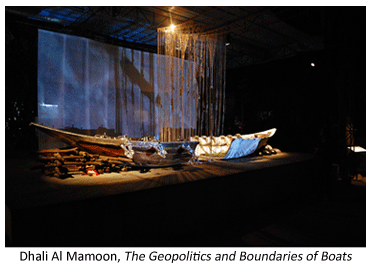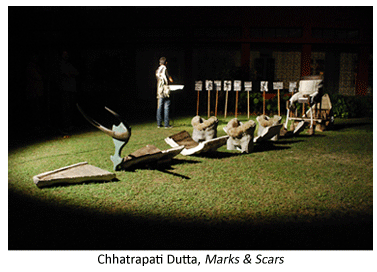- Prelude
- Editorial
- Manjit Bawa
- Husain's Calcutta
- Vivan's Visionary Reconstruction of History at Victoria Memorial, 1998
- The Remaking of Indian Painting
- Picasso Re-visited
- Benodebehari Mukherjee: A Recluse and the Centenary Show
- In Past and Present Continuum Speaking to Thota Vaikuntam
- The Importance of Being Husain
- Image-making to Image-circulation: Implicated Image(ry)
- 153 Years Old yet Young at Heart: Mumbai's Sir JJ School of Art
- Two Decades: A Critical Insight by an Art Critic and an Artist
- Biedermeier Style: Biedermeier Furniture
- Vacheron Constantin
- The Irony of Andy Warhol
- Then and Now: An Indian Perspective to the Art Market 1990-2010
- Pablo, Andy, Here I Come
- What Happened and What's Forthcoming
- Bid's Got Hammered?
- Anish Kapoor at National Gallery of Modern Art in Delhi and Mehboob Studio in Mumbai
- Tribute to Hemanta Misra: the “Calcutta Group” Painter
- Art Events Kolkata
- Mumbai Art Sighting
- Art Bengaluru
- Exploring the Riverine Culture of Bengal
- Alternative art practices define Bangalore
- India Art Summit Turns Three
- An Aesthetic Fair
- SSVAD: A New Arts Centre in Santineketan
- Visible Invisible by Siraj Saxena
- A Fleeting World : Paintings by Sunil De
- Previews
- In the News
ART news & views
Exploring the Riverine Culture of Bengal
Volume: 3 Issue No: 12 Month: 1 Year: 2011
Reports
by Oindrilla Maity Surai
December 21st marks the open studio the culmination of a month long research based international workshop by Khoj Kolkata titled THE BOAT PROJECT: Exploring the riverine culture of Bengal. As the title suggests, the artists explored the riverine traditions of Bengal and interpreted its' various facets with their studies beginning at Balagarh in the Hooghly district of West Bengal.
The participating artists were Abhijit Gupta, Chhatrapati Dutta, Saikat Surai, Tamal Mitra, Piyali Sadhukhan, Srikanta Paul, Dipyaman Kar and Dhali Al Mamoon.
Satgaon Knatha and other stories by Abhijit Gupta adorns a real boat procured from Balagarh with staple pins,  which in a way approximates the knatha stitch and locate it on a large map of the rivers of Bengal, in an attempt to join together the various historical narratives of this region that has intrigued me. The staple pins are suggestive of the flowing currents of the river system. They also symbolize a modern tool that mimics the boat maker's jolui.
which in a way approximates the knatha stitch and locate it on a large map of the rivers of Bengal, in an attempt to join together the various historical narratives of this region that has intrigued me. The staple pins are suggestive of the flowing currents of the river system. They also symbolize a modern tool that mimics the boat maker's jolui.
Dhali Al Mamoon prefers to de-construct objects rather than constructing them. Yet, during the process of creating, both these tendencies run parallel, almost in tandem. In The Geopolitics and Boundaries of Boats he attempts to alter and re-interpret the elements and objects and re-contextualized them to a reality removed from their original usage and context. The elements present themselves with their respective baggage of history, politics and memories to create a multi-layered narrative on a different plain.
Marks & Scars by Chhatrapati Dutta re-looks and re-reads into the riverine culture of Bengal, through the architecture, and the terra-cotta reliefs around Nadia that are clear signs of influences and migratory participation of Mughal artisanship, leading to the use of direct references of elements from their traditions and practices. His installation is an attempt to bring together the marks on wood that happen during the clamping of the jolui, that holds the parts of the indigenously treated and shaped planks of a boat together, and the scars that the colonized history has left behind, which is there between the lines, but not directly evident in the stories that lie in the temple reliefs. The violence and greed inherent in the process of colonization, the unequal exchange that underlines this process becomes the base line of this assemblage.
Of Boats, Walls and Spaces by Saikat Surai, metaphorically weaves the threatened industry of boat-making with Museums which are contemporary spaces where traditions are glass fronted.  Surai opens a dialogue by projecting the documentation of the process of boat making and a boat maker in conversation, on the outer wall of the Indian Museum evoking the debate about private and public spaces while a book shelf filled with paper boats tries to mimic a museum. A conversation with a boat maker about his craft becomes a dialogue between walls, objects and spaces.
Surai opens a dialogue by projecting the documentation of the process of boat making and a boat maker in conversation, on the outer wall of the Indian Museum evoking the debate about private and public spaces while a book shelf filled with paper boats tries to mimic a museum. A conversation with a boat maker about his craft becomes a dialogue between walls, objects and spaces.
Piyali Sadhukhan's Kaliya tries to re-create the image of the mythical Kaliya the poisonous serpent, who lived in the Yamuna river and polluted it. By twisting waste plastic bags and a sail she hints at reflects our non-chalance to an impending disaster Dipyaman Kar's Gora Potton throws light on the process of a natural material as wood as it transforms into a cultural construct.
Tamal Mitra through various interactions tries to understand the economic situation of the boat makers in his work in 6 TO 6.
This will be an ongoing exercise to build an archive on all related subjects in the form of research papers, books, photographs, etc. The compilation could in future be made available online on the Khoj Kolkata web-based as well as physical archive; following a publication, a series of open studios by resident artists and symposia; link-up and share information with research institutes and individuals specializing in these fields. Based on the data available, artists will be invited to a one month residency at Khoj Kolkata.